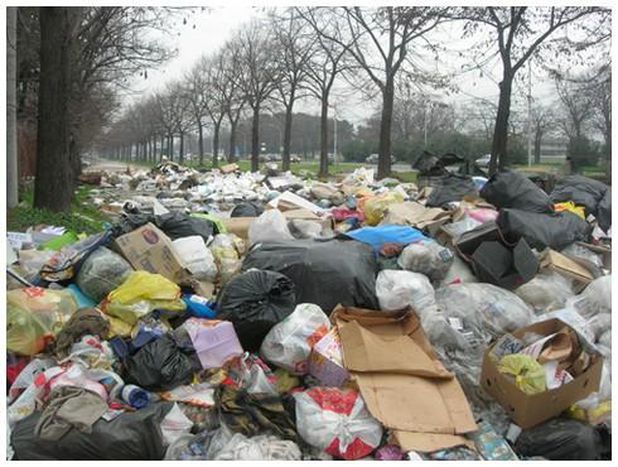
It's not just rubbish in Naples
Published on
Translation by:
Mary MaistrelloCampania drowns in tonnes of refuse. The EU threatens the intervention of the Court of Justice. How did we get this far, asks a young Neapolitan reporter
Italy is once again in a difficult position; the EU has issued an ultimatum: from 31 January the country will have a month in which to resolve its situation, otherwise the matter will be handled directly by the European Court of Justice.
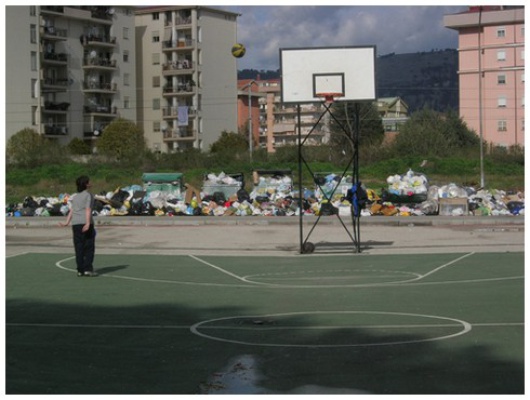 'The situation in Campania (the Italian region of which Naples is the capital city), is intolerable and I can understand the frustration of its citizens,' declares the European environment commissioner, Stavros Dimas. 'It’s absolutely necessary that the Italian authorities adopt adequate measures, as they are already doing, to solve the problem, and that they should build the necessary infrastructure to put an end to this situation which has dragged on for over ten years.'
'The situation in Campania (the Italian region of which Naples is the capital city), is intolerable and I can understand the frustration of its citizens,' declares the European environment commissioner, Stavros Dimas. 'It’s absolutely necessary that the Italian authorities adopt adequate measures, as they are already doing, to solve the problem, and that they should build the necessary infrastructure to put an end to this situation which has dragged on for over ten years.'
In fact, the 'crisis' in the processing of refuse in Campania began in 1996. The region approved a rather ambitious refuse processing plan which did not envisage dumping or recycling. Rubbish would be converted into energy, thanks to a system of waste-to-energy technologies (WtE, incinerators which convert heat into energy, ed). Refuse began to be stored in eco-bales (a process prior to incineration, ed), but people started to complain because of the plants’ ecological and environmental effects. The processing plants had not been activated yet, whilst at the same time, the old dumps were being closed down. Since then, Naples and Campania have been regularly drowning in rubbish, the local and regional councils at a loss on what to do. But is this not dragging on far too long? A young Neapolitan photographer gives his opinion
I look at Naples through these holes
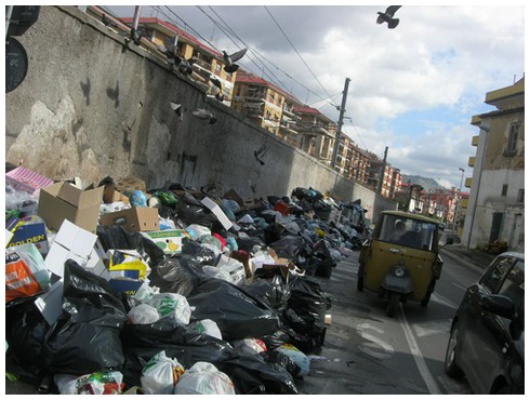 Every place on earth has something which is difficult to explain, something typical of that spot: vices, mannerisms, habits, words, virtues and sins. Campania is one of those places where the difficulty in getting your message across to others becomes akin to an insurmountable obstacle, a wall of reinforced concrete.
Every place on earth has something which is difficult to explain, something typical of that spot: vices, mannerisms, habits, words, virtues and sins. Campania is one of those places where the difficulty in getting your message across to others becomes akin to an insurmountable obstacle, a wall of reinforced concrete.
Naples has been on half the world’s lips in the past few weeks – the mountains of rubbish in the streets, the road blocks, the bonfires, the police interventions. But despite all the talk, the question remains: how did it happen? How could it happen that one of the most beautiful and problematic cities in Italy is covered in all this refuse which it can’t manage?
 Everyone has wondered about Naples, but this is not a problem involving just the regional capital. The smaller towns and villages hve especially been affected most. Disappeared or swallowed villages probably never saw the light of democracy and the freedom of a republic. In towns, political power goes hand in hand with the camorra (the equivalent of the mafia).
Everyone has wondered about Naples, but this is not a problem involving just the regional capital. The smaller towns and villages hve especially been affected most. Disappeared or swallowed villages probably never saw the light of democracy and the freedom of a republic. In towns, political power goes hand in hand with the camorra (the equivalent of the mafia).
In the hinterland of Campania, traffic signs have been reduced to colanders, full of bullet holes. They have rusted, and the rust mixed up with the rain pours down, etching the squalid picture of the present situation. It’s a kind of mirror, deformed and deforming, which reflects the image of the land in which you are living. Every day, the inhabitants of this land must get up and look in this mirror. Those holes are wounds to the heart for those who live there day in and day out. They are holes on the image of Italy.
In order to understand what is going on - the mountains of rubbish - you have to start at the bullet holes. One would have to shout to the world that politics in Campania has neglected for years to build plants for the treatment and differential collection of rubbish; one would have to shout that huge dumps have been operating for years, causing irreversible poisoning to the region. One would have to declare that for decades assurances have been given regarding the setting up of the dumps, which then turned into real destruction bombs for the environment. And one would also have to talk about a region where public transport, social welfare, health services, schools and the judiciary don’t work. The rate of unemployment in Naples reaches 31.39%, with the region of Campania at 1.58%, whilst the rest of Italy is at 6.8%.
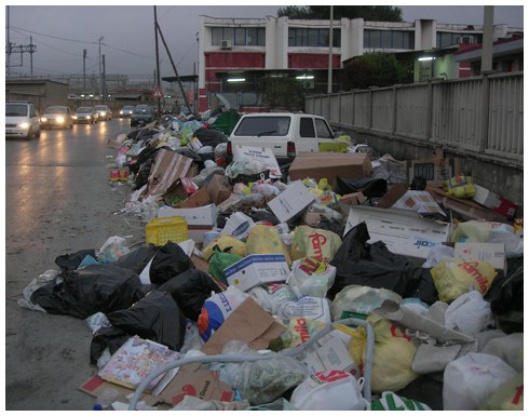 So, after closing the last dumps without drawing up any plans for the treatment of refuse, the Italian state has found itself trying to manage an alarming state of affairs. On one side, refuse sacks stacking up on the roads, on the other, the rebellion of people who don’t want to suffer anymore, who are not prepared to accept choices which they deem inadequate.
So, after closing the last dumps without drawing up any plans for the treatment of refuse, the Italian state has found itself trying to manage an alarming state of affairs. On one side, refuse sacks stacking up on the roads, on the other, the rebellion of people who don’t want to suffer anymore, who are not prepared to accept choices which they deem inadequate.
The situation in Campania can be compared to the one in the French banlieues. It is not in fact, all about rubbish. It cannot be only about that, if fires are being lit in protest all over Campania. It is to do with a social unrest which is exploding on one of the unresolved questions of southern Italy and Europe. A region used to tolerating and to enduring. And a region also sometimes blatantly guilty of co-operating with the enemy, if only for a 'quiet life'.
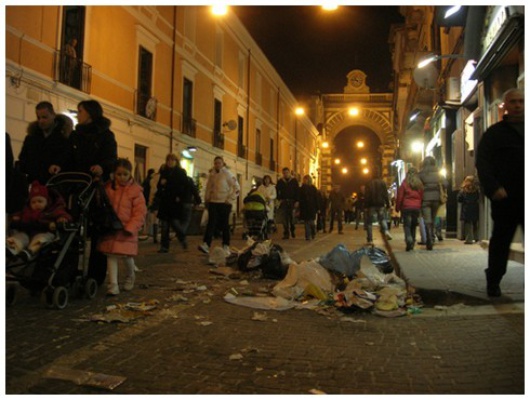 (All photos: Giulio Finotti)
(All photos: Giulio Finotti)
Translated from Emergenza a Napoli? Non solo “munnezza”



